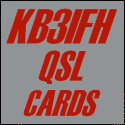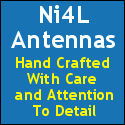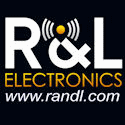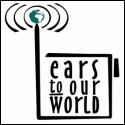Posts Tagged ‘Technician License’
 All New Technician License Class – Monument, CO
All New Technician License Class – Monument, CO
 The Technician license is your gateway to the worldwide excitement of Amateur Radio, and the very best emergency communications capability available! This is the entry-level class for people who do not currently have an amateur (ham) radio license.
The Technician license is your gateway to the worldwide excitement of Amateur Radio, and the very best emergency communications capability available! This is the entry-level class for people who do not currently have an amateur (ham) radio license.
The Tri-Lakes Monument Radio Association (Monument, CO) is introducing a new approach to teaching the Technician Level ham radio license class. We have completely overhauled the delivery format of our Tech Class to make good use of both in-person and online training methods. The biggest change is that most of the core material will be delivered to the student via bite-sized online videos, ebook sections, and additional content from Ham Radio School. This dramatically increases the flexibility on how and when the student views this material, eliminating long, all-day classroom sessions. We will have three live Zoom sessions along the way to review the material and answer any questions you might have.
We understand that in-person training is extremely valuable for certain types of activities. Accordingly, we will have an in-person kickoff session (Feb 17) for the instructors to meet the students and show them how ham radio equipment is used. The licensing exam session (Mar 9) is another in-person event. Finally, after you receive your new license, we will have an in-person Get On The Air event (Mar 16) where you will make your first radio contact. To help guide you through this process, an experienced radio ham will connect with you, monitor your progress, and help you through the class.
The cost of the class is $50 ($40 for anyone under 18 years old), which includes everything you need for the class. A non-expiring subscription to the Ham Radio School Technician resources is included. We used to require you to have a printed copy of the Ham Radio School Technician book, but that same material will be delivered to you online as an ebook. Proceeds from this class go to support the Tri-Lakes Monument Radio Association, a non-profit organization.
You still need to pay a $35 license fee directly to the FCC after passing the license exam.
More details are in the attached flyer.
To register, go here:
https://w0tlm.com/radio-classes/tech-registration
You can probably tell I am excited about the new format for this class. It will make it easier on the instructors to deliver the material AND easier for the students to learn it. If you have questions, let me know!
Bob K0NR
[email protected]
The post All New Technician License Class – Monument, CO appeared first on The KØNR Radio Site.
 Ham Radio School Does Video!
Ham Radio School Does Video!
 I’ve been teaching ham radio license classes with our local radio club for many years now using the Ham Radio School books, written by my friend Stu Turner (W0STU). We use a fast-paced two-day format that strives for efficient learning…go fast but have the students actually learn something. Towards that end, we were frustrated with the existing license books and online material available: they either just “taught the exam” or overwhelmed the student with too much detail. Stu ended up writing the Technician license book that solves this problem. Is easy to read and covers just enough of the material so that the student actually learns about ham radio.
I’ve been teaching ham radio license classes with our local radio club for many years now using the Ham Radio School books, written by my friend Stu Turner (W0STU). We use a fast-paced two-day format that strives for efficient learning…go fast but have the students actually learn something. Towards that end, we were frustrated with the existing license books and online material available: they either just “taught the exam” or overwhelmed the student with too much detail. Stu ended up writing the Technician license book that solves this problem. Is easy to read and covers just enough of the material so that the student actually learns about ham radio.
Now Ham Radio School has moved to the next level, offering an online Technician class based on high-quality video training. Stu is an excellent instructor and very competent at explaining the key concepts, so the videos are easy to watch and digest. Different people have different learning styles, so the Ham Radio School learning system includes the highly successful Technician book, online videos, and an extensive set of support materials on the hamradioschool.com website. Of course, these different elements are integrated together and present the ham radio concepts in a consistent manner.

Stu has developed a video production system that really works, using professional computer graphics tools. The videos are easy to watch, proceeding at a decent pace. If you miss something, you can always back up the presentation and look at it again.

You can try out the first four Technician lessons at no charge and then decide if this approach works for you. The entire video course is available for an introductory price of $15.95. (The Ham Radio School book is available for $19.95). Depending on your learning style, you might just want to read the book, view the video class, or do both. Your choice.
73 Bob K0NR
Disclosure: I have contributed content to the Ham Radio School website, provided technical consulting on the General License class book, and have received compensation for this work.
The post Ham Radio School Does Video! appeared first on The KØNR Radio Site.
 Technician License Class – Black Forest, Colorado
Technician License Class – Black Forest, Colorado
 The Technician license is your gateway to the worldwide excitement of Amateur Radio, and the very best emergency communications capability available!
The Technician license is your gateway to the worldwide excitement of Amateur Radio, and the very best emergency communications capability available!
We are once again offering our highly-successful Technician License Class in Black Forest, Colorado.
- Earn your ham radio Technician class radio privileges
- Pass your FCC amateur radio license exam right in class on the last day
- Multiple-choice exam, No Morse Code Required
- Learn to operate on the ham bands, 10 meters and higher
- Learn to use the many VHF/UHF FM repeaters in Colorado
- Find out how to participate in emergency communications
Schedule: in-person plus online
Sat Oct 15 9:00 am – 3:30 pm In Person
Sun Oct 16 4:00 – 5:30 pm Online (Zoom)
Tue Oct 18 6:00 – 8:00 pm Online (Zoom)
Sat Oct 22 9:00 am – 3:00pm In Person (includes Exam Session)
In-person sessions are held at the Black Forest Fire & Rescue Station 1, 11445 Teachout Road, Colorado Springs, CO 80908
Registration fee: $30 adults, $20 under age 18
Advance registration is required.
Note that the FCC now charges a $35 license fee, payable after you pass the license exam.
Students must have the required study guide: Ham Radio School Technician License Course, 2022 – 2026
Register
To register for the class, go to:
http://w0tlm.com/radio-classes/tech-registration
Any questions, contact Bob Witte KØNR [email protected]
Sponsored by the Tri-Lakes Monument Radio Association www.w0tlm.com
For more information on amateur (ham) radio visit www.arrl.org
The post Technician License Class – Black Forest, Colorado appeared first on The KØNR Radio Site.
 Get Your Ham Radio License, Colorado
Get Your Ham Radio License, Colorado
The Technician license is your gateway to the world-wide excitement of Amateur Radio, and the very best emergency communications capability available!
We are once again offering our highly-successful Technician License Class in Monument, Colorado.
- Earn your ham radio Technician class radio privileges

- Pass your FCC amateur radio license exam right in class on the last day
- Multiple-choice exam, No Morse Code Required
- Learn to operate on the ham bands, 10 meters and higher
- Learn to use the many VHF/UHF FM repeaters in Colorado
- Find out how to participate in emergency communications
Schedule
Online + In-Person in Monument, Colorado
Sat April 2 1 – 5 PM In Person
Sun April 3 1 – 4 PM Online
Tue April 5 6 – 8:30 PM Online
Sat April 9 1 – 5 PM In Person (includes Exam)
Online sessions will be held using Zoom.
The in-person sessions will be at Woodmoor Community Center (Woodmoor Barn) in Monument, CO.
Registration fee: $30 adults, $20 under age 18
Advance registration is required.
 Students must have the required study guide:
Students must have the required study guide:
HamRadioSchool.com Technician License Course
Third Edition, 2018 – 2022
Register
To register for the class, go to:
http://w0tlm.com/radio-classes/tech-registration
Any questions, contact Bob Witte KØNR [email protected]
Sponsored by the Tri-Lakes Monument Radio Association www.w0tlm.com
For more information on amateur (ham) radio visit www.arrl.org
The post Get Your Ham Radio License, Colorado appeared first on The KØNR Radio Site.
 Your First (and Second) Ham Transceiver
Your First (and Second) Ham Transceiver
We recently completed a Technician License class that produced a herd of new ham radio licensees. This always leads to a discussion of what radio should I get? Often, this is centered on the idea of getting a handheld VHF/UHF radio to get started. That is a good first move. However, for many new hams it is worth looking ahead a bit to potential future purchases.
Handheld Transceiver (HT)
Let’s start with an HT. Even if your ham radio future is going to be on the high-frequency bands, an HT is a useful tool to have. After all, FM VHF is the Utility Mode for ham radio. Many new hams opt for an inexpensive Chinese radio such as the Baofeng UV-5R. Recently, I’ve been steering them toward the slightly more expensive Yaesu FT-4XR (around $70).

It is a significantly better radio than the UV-5R but still affordable. Some new hams decide to spend more on an HT, which is also a good option. There are many radios to choose from in the $150 to $350 range.
For hams just interested in local (perhaps emergency) communications, this might be the only radio they get. If it meets your needs, that’s just fine.
FM VHF/UHF Base Station
Another option to consider is to set up a more capable station at your home, focused on FM VHF/UHF operating. This is probably going to be a dual-band radio that covers 2 meters and 70 centimeters, FM only. One way to do this is to use a mobile transceiver powered by a DC power supply and connected to an external antenna on the roof.

With higher power (50W typical) and a good antenna mounted in a high location, this type of station has better range than an HT. See A VHF FM Station at Home and Considering a VHF/UHF Antenna For Your Home. This could be your first radio but why not have an HT in your toolkit?
The All-Band Base Station
Many new hams have their eyes on working distant stations via the high-frequency bands. For many people, this is what ham radio is all about. (Honestly, you’re going to need your General license to really participate on these bands.)

The equipment manufacturers have developed the Do Everything Transceiver that covers 160m though 70 centimeters in one box. (Well, they do leave out the 1.25m band which is lightly used in North America.) The leader in this category is arguably the Yaesu FT-991A. This type of rig has the advantage of providing all modes on all bands, including SSB on 2 m and 70 cm. While most VHF/UHF activity is FM, SSB (and CW) can be a lot of fun.
Setting up operations on multiple bands will require some additional antennas. This can be a deep topic so take a look at this introductory article to understand it better: Antennas…How Many Do I Need?
Two-Radio Base Station
Another approach that many hams adopt is to build their home station around two radios: a 2m/70cm radio to cover local communications and a high frequency (HF) radio for the lower bands.
The 2m/70cm radio is the same idea as the FM VHF/UHF Base Station mentioned previously. It is really handy to be able to leave this radio on your favorite 2m frequency while still having another radio available to operate HF. Compare this to the All Band Transceiver approach which can normally only receive one frequency at a time.
A very popular HF radio these days is the ICOM IC-7300. Like many HF rigs, it covers the HF bands of 160m through 10m AND tosses in the 6m band, too. Recall that 6 meters is actually a VHF band but the general trend is to include this band in HF rigs.

The Mobile Station
Another popular operating style is to have a transceiver in your vehicle. Because our society is so mobile, this approach can be very compelling. This might just be an HT that you take with you when mobile. The rubber duck antenna might be sufficient but an external (magnetic mount?) antenna can really improve your signal.
Many hams install a VHF/UHF FM transceiver in their car. This provides a more capable station (more power, better antenna) when mobile and it’s always there for use. Again, this will probably be a 2m / 70cm radio that operates only FM, the most common mobile ham station.
Some folks set up their mobile station to include HF operating. This is one way to sidestep HF antenna restrictions at home and it fits into our mobile society. There are Do Everything Transceivers that come in a mobile-type form factor. The Yaesu FT-857D is a popular mobile radio that covers HF, 6m, 2m and 70cm in one rig.

General Progression
You can see that there are some paths that hams tend to follow in terms of equipment. What you decide to do is going to depend on your interests and budget. Of course, when you are first starting out you may not know what part of ham radio is going to be your favorite and your approach may evolve as you gain experience.
A good first, affordable step is getting an HT. This puts you in touch on the air with the local amateur radio community. It is clearly a VHF/UHF FM play which aligns well with your Technician operating privileges. You can choose to expand on this general direction by adding in an FM VHF/UHF Base Station, an All-Band Base Station, or a Mobile Station.
If you are interested in using the HF bands, then think about either the All-Band Base Station or the Two-Radio Base Station. Again, obtaining a General class (or Extra class) license is going to be important for HF.
I’ve tried to keep this discussion focused on newly licensed hams. As you gain experience, you’ll find all kinds of other operating activities that are available to you. Sometimes these can be supported by the equipment described above…sometimes you’ll need to purchase additional gear. I’ve mentioned specific radio models that I have experience with but there are many others to choose from. Take a look at the eham.net product reviews to see how well other people like a particular radio.
73 Bob K0NR
The post Your First (and Second) Ham Transceiver appeared first on The KØNR Radio Site.
 What About the Yaesu FT-4XR?
What About the Yaesu FT-4XR?
 A few years ago, the Baofeng UV-5R set a new price point for an entry-level handheld transceiver and quickly became the “easy choice” for a newly licensed Technician. It is a very impressive piece of technology for the money (about $30).
A few years ago, the Baofeng UV-5R set a new price point for an entry-level handheld transceiver and quickly became the “easy choice” for a newly licensed Technician. It is a very impressive piece of technology for the money (about $30).
However, it is well known that the UV-5R struggles to meet the FCC Part 97 emission requirements. The ARRL lab has published the results of testing a large number of the Baofeng radios and many of them do not meet the FCC spec. Also, the receiver performance is not that great, primarily with respect to adjacent channel and out-of-band rejection. In other words, it is easily overloaded by strong radio signals.
In response, Yaesu created a low-cost radio using similar technology as the UV-5R but with (supposedly) higher quality. This radio escaped my attention when introduced but some recent reviews caught my eye. In particular, the QST review of the radio includes a detailed lab test report. (The ARRL does a good job with these test reports.) The review basically says that this radio performs well, especially considering its price class. The price of the radio is currently about $70, so it is more expensive than the UV-5R, but under $100.
Evaluating the FT-4XR
So I went ahead and purchased an FT-4XR to try it out for myself. The main question on my mind is should I recommend the FT-4XR as a good choice for a new radio amateur. I am a license class instructor for our radio club (W0TLM), so I often encounter new hams that are looking for advice on what radio to buy.
My general impression of the FT-4XR is that it looks and feels like a quality product, giving a better first impression than the Baofeng. It fits nicely in my hand and just felt good.
The usability of the FT-4XR is on par with the Baofeng, but a notch down from something like a Yaesu FT-60. In particular, the FT-4XR loads up the keys with multiple functions: press quickly for one function, press and hold for another function, use the “function shift” key for a third function. Yikes! None of this is labeled so you have to memorize all of this or carry a quick reference card with you. Not a huge problem because these are mostly features that are not used frequently or maybe not at all. This means that the FT-4XR is a radio that needs to be set up via programming software to get the desired memories in place. Then, you just choose the right memory / channel. Not any worse than the Baofeng and similar to many, many radios on the market these days.
The standard FT-4XR manual is adequate but not great. There is an “advanced manual” available on the Yaesu.com web site that may help. The USA version of the radio does not allow transmit outside of the ham bands. This is probably a good thing, especially for a new user. Some people may see this as a disadvantage compared to the Baofeng, which usually transmits over a wider range of frequencies.
Transmitter Harmonics
I trust the ARRL lab tests but I wanted to measure the transmitter to see the harmonic performance up close and personal. The spectrum analyzer measurement below shows the transmitter with very clean harmonics on 2m, just as I would expect from Yaesu. If you look carefully, you can see a tiny third harmonic just poking up out of the noise floor. (Sorry about the poor graphics, I just took a quick photo of the screen using my phone.)

The 70 cm harmonic performance is also very solid, as shown below.

I also checked the power output, transmit frequency, FM deviation and receiver sensitivity on both bands. Very solid performance. Again, nice job, Yaesu!
Yaesu Inconsistency
One thing I found disappointing is that the radio operation and accessories are not consistent with other Yaesu radios. I’ve got a decent collection of Yaesu handhelds, speaker/microphones, antennas, programming cables, etc. None of these work with the FT-4XR. In particular, the FT-4XR uses the male SMA connector (same as Baofeng) and requires a new type of programming cable. However, for the first-time buyer, this doesn’t matter and it is no different than buying a Baofeng.
Some other reviews that you may want to consider:
Recommendations
Back to the main question:
Do I recommend the FT-4XR as a good choice for a new radio amateur?
The answer is YES, this is a better radio than the Baofeng UV-5R and it actually meets FCC Part 97 requirements. If you are considering the UV-5R, scrape up a few more bucks and get the FT-4XR.
If you want an even better radio, I’d suggest moving up to something like the tried and true Yaesu FT-60, about $160. It has a more robust receiver and is easier to use.
The post What About the Yaesu FT-4XR? appeared first on The KØNR Radio Site.
 Technician License Class – Black Forest, CO
Technician License Class – Black Forest, CO

Black Forest, Colorado
Sat Feb 22 and 29
8 AM to 5 PM
Black Forest Fire Station
intersection Burgess Rd. & Teachout Rd.
The Technician license is your gateway to the world-wide excitement of Amateur Radio, and the very best emergency communications capability available!
• Earn your ham radio Technician class radio privileges
• Pass your FCC amateur radio license exam right in class on the second day
• Multiple-choice exam, No Morse Code Required
• Live equipment demonstrations
• Learn to operate on the ham bands, 10 Meters and higher
• Learn to use the many VHF/UHF FM repeaters in Colorado
• Find out how to participate in emergency communications
Registration fee: $30 adults, $20 under age 18
In addition, students must have the required study guide: HamRadioSchool.com Technician License Course Third Edition, effective 2018 – 2022, $22.95 print, $19.99 Kindle
Advance registration is required (No later than one week before the first session, earlier is better, first-come sign-up basis until the class is full.)
To register for the class, contact:
Bob Witte KØNR
Email: [email protected] or Phone: 719/659-3727
Sponsored by the Tri-Lakes Monument Radio Association
For more information on amateur (ham) radio visit www.arrl.org
Download: Tech License Class Flyer – Feb 2020
The post Technician License Class – Black Forest, CO appeared first on The KØNR Radio Site.











